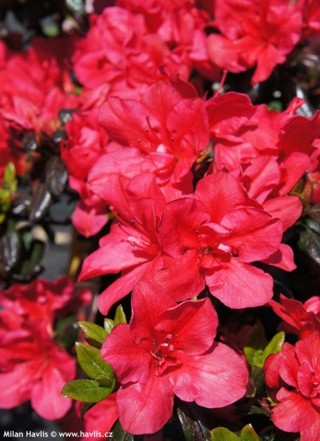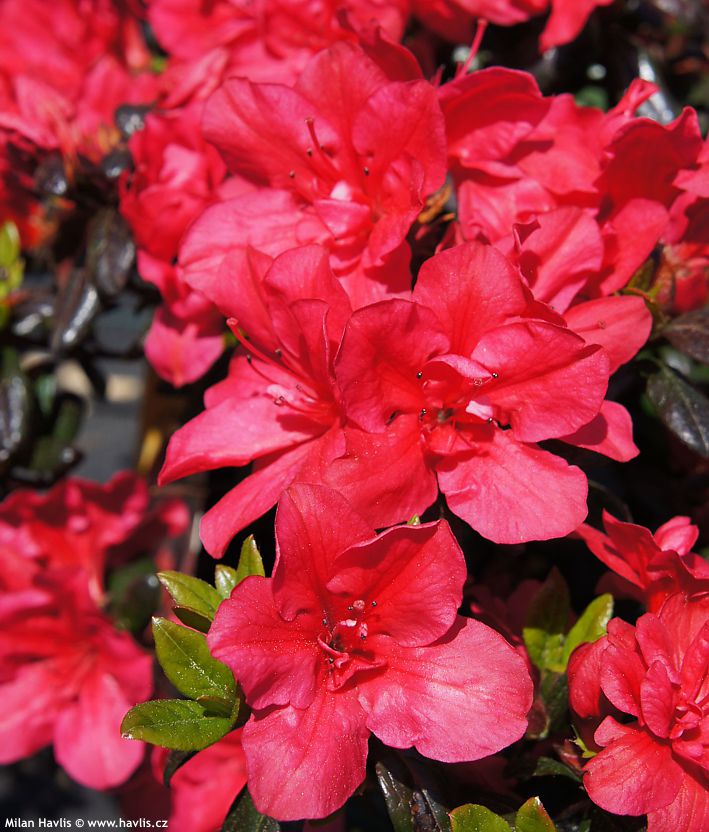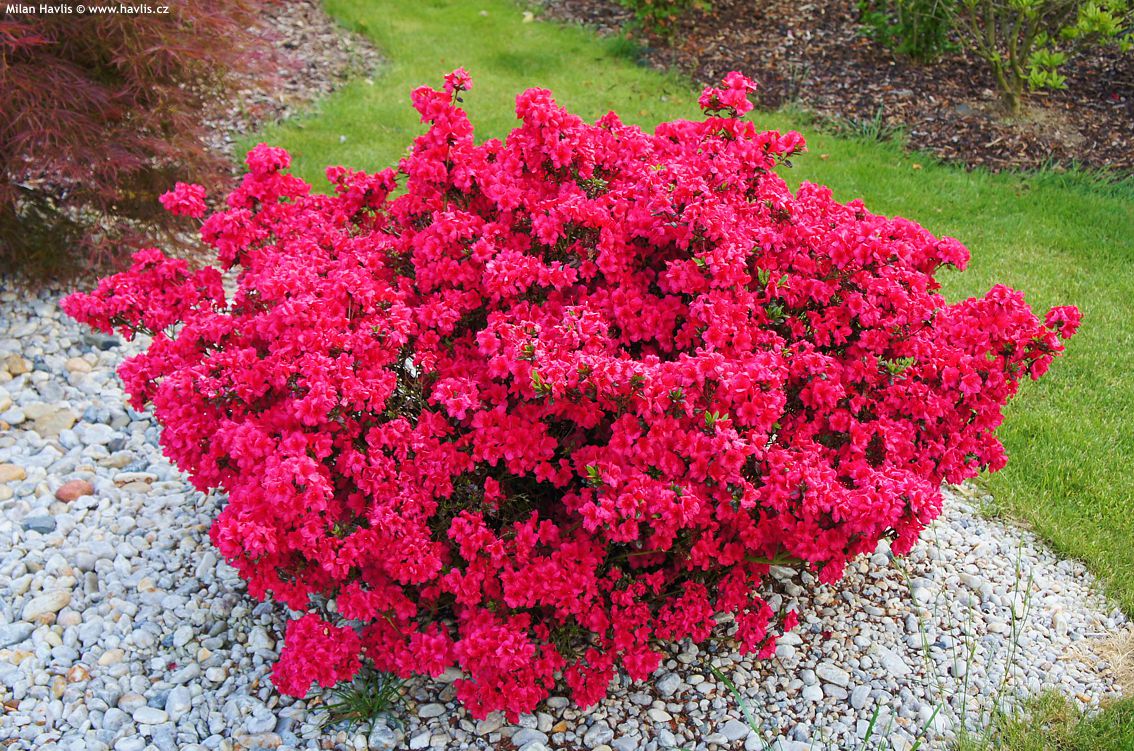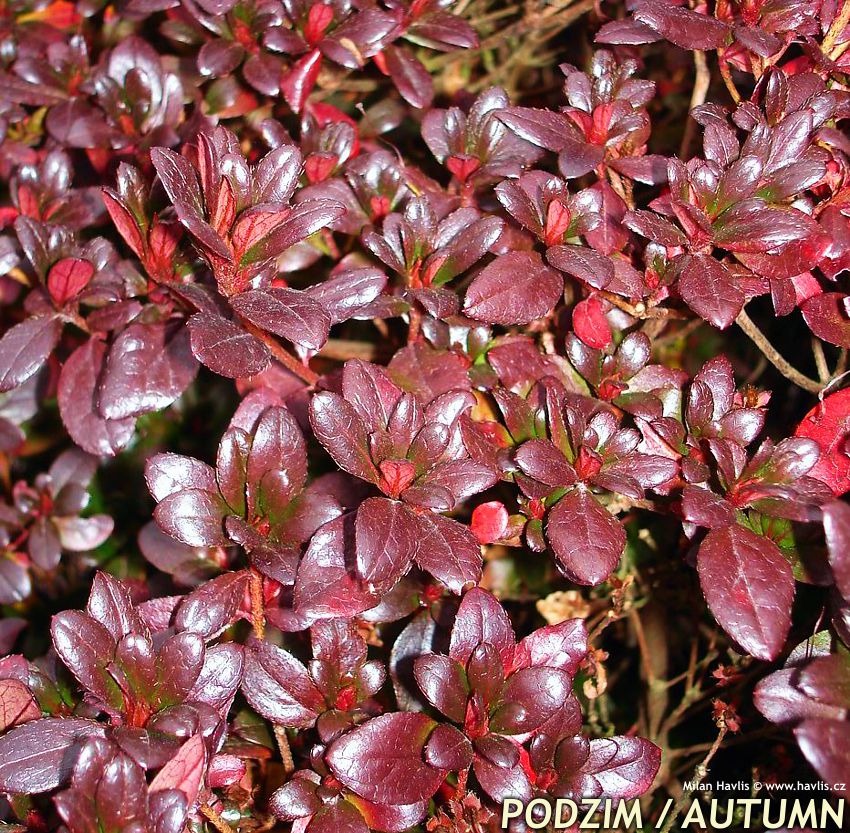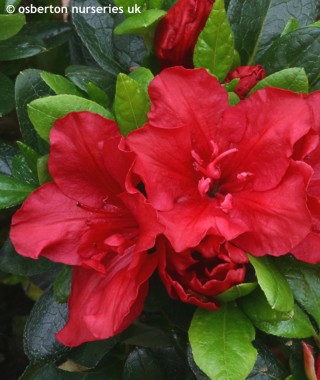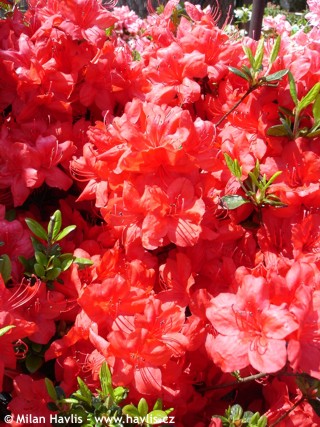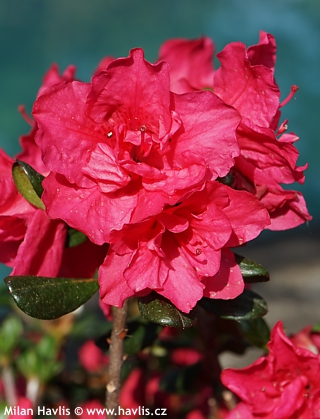Azalea japonica 'MARUSCHKA'® Japanese azalea
Azalea
Japanese azaleas are very popular features of our gardens. In their home climate they grow to relatively substantial shrubs, as opposed to limited sizes in our continental, dry climate. They are very floriferous, maintenance-free shrubs that usually bloom from mid to late spring.
Maruschka® is a lovely name for a lovely azalea. Who knows which Maruschka made the breeder Hans Hachmann give this gorgeous plant an East-European name in 1988. This Japanese azalea is a low growing plant with profusion of mid-sized bright red flowers in May. Wen in full bloom they cover the plant almost entirely. Leaves are nonetheless pretty – they are small, oblong, very glossy, deep green in summer and reliably evergreen in winter or should we rather say ever-red since they turn red in autumn and grade to even deeper burgundy red in winter. This colour remains on the plant until it begins flowering in the spring. Maruschka® grows about 45 cm tall and 70 cm wide when 10 years old.
Japanese azaleas can be clipped to shapes in early June. If so, do not use fertilizers enhancing growth rate. The size of new branches would get out hand and spoil the shape you are going to achieve. They need light, permeable soil that is acid, constantly moist (keep azaleas mulched at all times) and moderately fertile. Use fertilizers for rhododendrons and azaleas, or ericaceous plants. The best soil mix is 1/3 of peat, 1/3 of leaf-mould or lime-free compost, and 1/3 of soil from the hole where you are going to plant it. Azaleas have shallow roots, so do not plant not too deep. Fully hardy to -28°C (USDA zone 5).
Last update 07-01-2010.

































